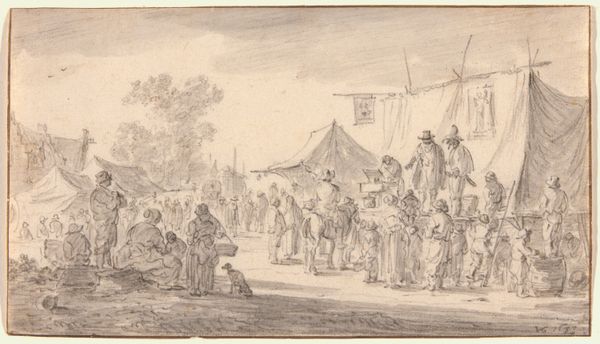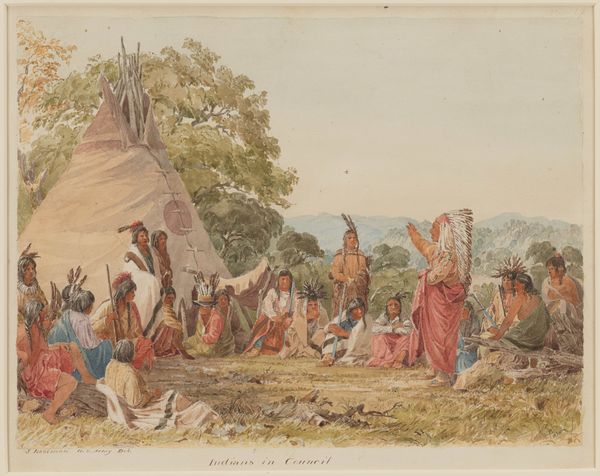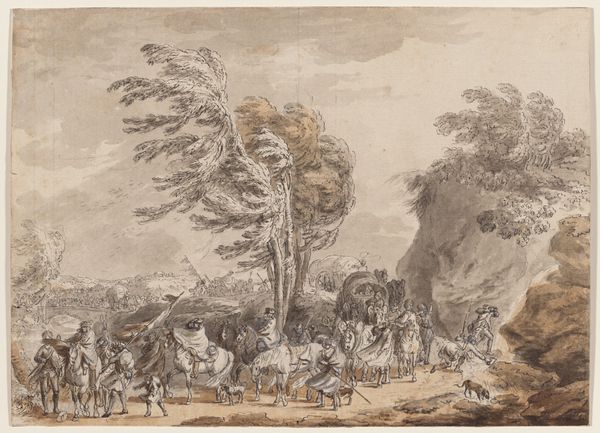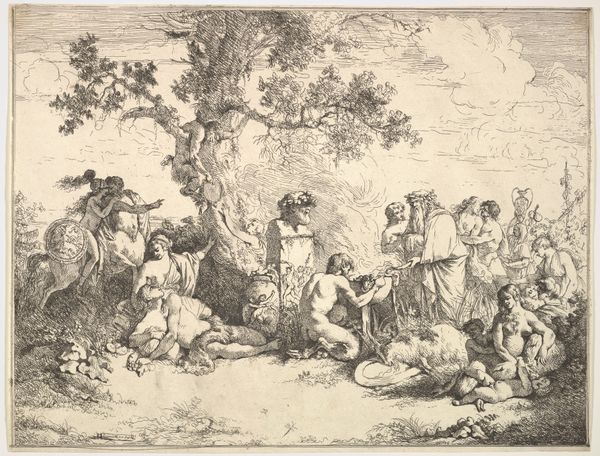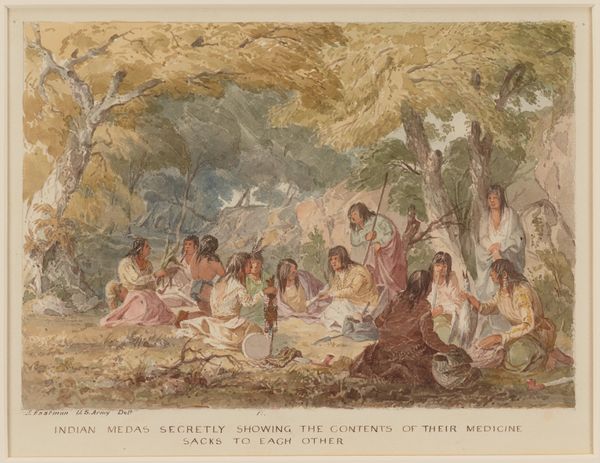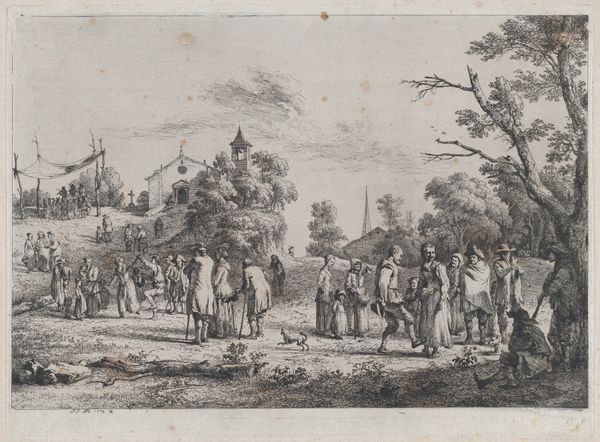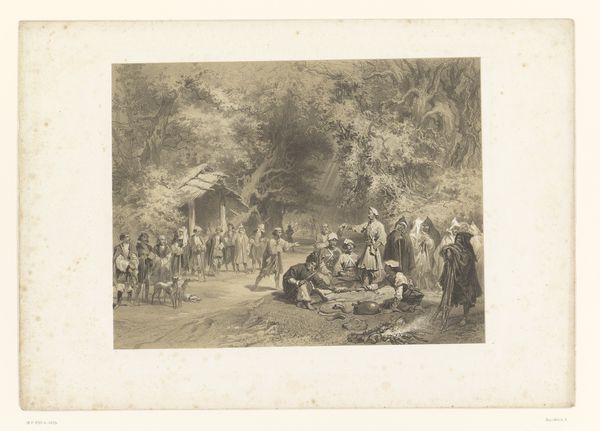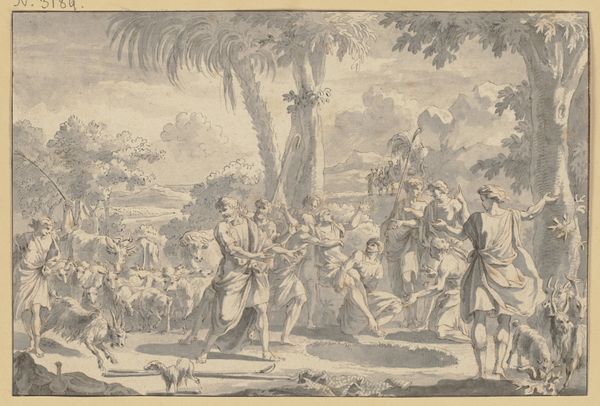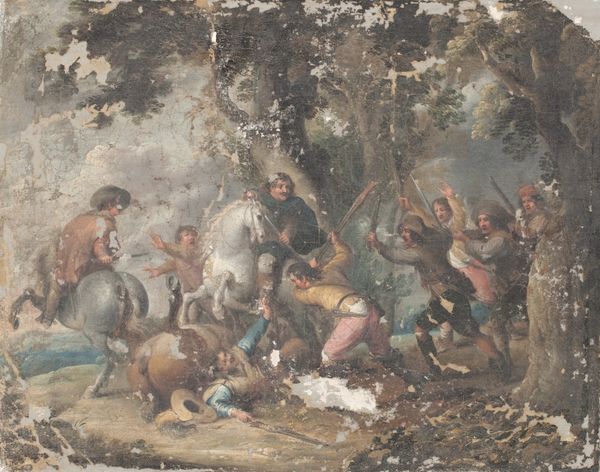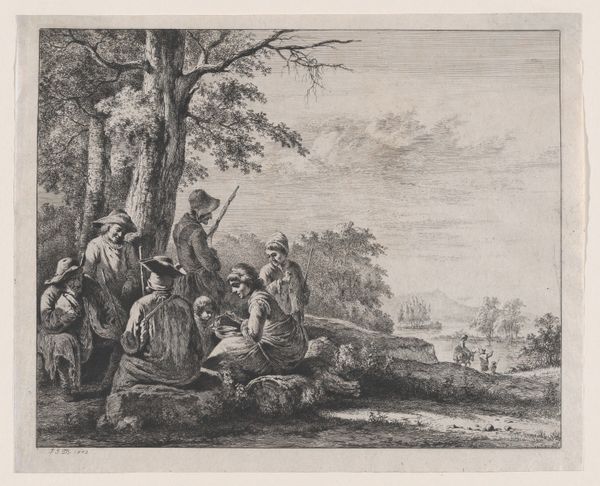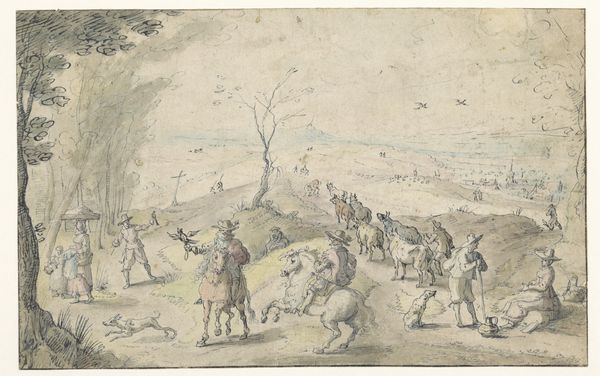
painting, watercolor
#
narrative-art
#
painting
#
landscape
#
figuration
#
watercolor
#
indigenous-americas
Dimensions: 6 3/4 × 10 1/8 in. (17.1 × 25.7 cm) (image)17 9/16 × 21 1/2 × 1 1/8 in. (44.6 × 54.6 × 2.9 cm) (outer frame)
Copyright: Public Domain
Editor: This is "Dog Dance of the Dacotahs" by Seth Eastman, created in 1849 using watercolor and drawing techniques. The artwork has a dreamlike quality because of the muted color palette. What compositional elements stand out to you the most? Curator: I notice first the arrangement of forms, the recession of space. The foreground figures, engaged in the dance, are sharply defined in comparison to the ethereal background. This juxtaposition creates a distinct visual hierarchy, drawing the viewer's attention to the central performance. Consider also Eastman’s strategic placement of the teepees. Do they appear to merely denote setting, or does their arrangement reinforce a particular compositional rhythm? Editor: That makes me think about how the light also falls unevenly, almost theatrical. I see how Eastman creates an interesting visual balance by positioning that cluster of figures in a shadowy space in the background, contrasted with those clearly defined teepees behind the dancers. Does this suggest an implied narrative about community and spectatorship? Curator: Note how the materiality of the watercolor contributes to the painting's representational quality. The fluid nature of the medium allows Eastman to capture light and atmosphere, blurring details to heighten a sense of dynamism. The restrained palette contributes to the overall harmony. Eastman contrasts textures, smooth washes to depict skin and detailed line work for the dancers' regalia. These formal devices function to communicate details about the cultural traditions being portrayed. Editor: Thinking about Eastman’s artistic decisions in this way really makes me appreciate the nuances in his depiction of form, texture, and light. Curator: Indeed, it provides a layered interpretation and demonstrates Eastman's manipulation of technique in the visual storytelling.
Comments
minneapolisinstituteofart about 2 years ago
⋮
Seth Eastman owned an early daguerreotype—a coincidence since a relative founded Eastman Kodak in the 1890s—and may have used it to record this scene. Native people attached immense cultural meaning to the power of the photograph, which may account for the startled looks on the men near the middle (one pointing, one crouching). In the Dog Dance, Dakota villagers attempted to absorb canine virtues (Dakota people greatly admired dogs) by eating the heart and liver of a newly sacrificed dog. This prize had to be grabbed from the pole with teeth, not hands, as the picture shows. Other dancers mimic dog behavior. This watercolor, one of 35 works on paper by Eastman in Mia’s collection, was the basis for an illustration in Henry Rowe Schoolcraft’s massive "Historical and Statistical Information Respecting the History, Condition, and Prospects of the Indian Tribes of the United States" (Philadelphia: Lippincott, Grambo & Co., 1851-57).
Join the conversation
Join millions of artists and users on Artera today and experience the ultimate creative platform.
